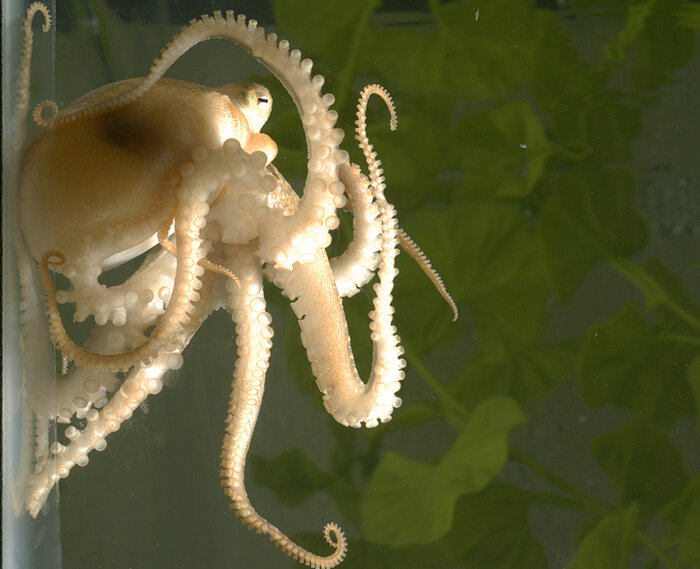1. Synthetic Coral Could Remove Toxic Heavy Metals
-----------------------------------------------
2. Octopus Genome Offers Insights Into Oddballs

A recent report in the journal Nature reported one the complexity of the genetic code of the California two-spot octopus, scientific name is octopus bimaculoides. Scientists studied the species to understand how they are able to regrow lost arms, change the color of their skin, and travel through the ocean using jet propulsion. Surprisingly, the octopus genome was made us of 150-160 genes which is more than what was expected in invertebrates. The arm's suckers were a particular point of interest and reviews the gene activity that is similar to signaling between neurons in other animals. Read more...
-----------------------------------------------
3. Meet the Echo Seeker
Every week we discuss some of the deep water discoveries of unmanned vehicles (UAV) but, do you really know what this technology looks like? Boeing has recently released information on their Echo Seeker submersible. Because of the extreme pressure, the design and function of this vehicle is significantly different from the defense contractor's space vehicles. The UAV can submerge to depths of 20,000 feet and can perform 3 day long missions. Read more...
-----------------------------------------------
4. India Could Lead on Climate Change
As the world prepares for the UN Framework Convention on Climate Change (UNFCCC) in Paris at the end of this year, nations have prepared their proposals to change the energy policies. India is one nation that has already started the transformation. The country has embraced more sustainable lifestyle models, development into renewable energy, and increased access to energy and cleaner development. Read more...
-----------------------------------------------
5. Is This The Biggest Great White Shark Ever Filmed?
This week, off of the coast of Mexico's Baja California, Guadalupe Island, biologist Mauricio Hoyos Padilla filmed a 20 foot great white shark. The average length of a great white shark is any where between 12 to 14 feet long. Padilla also believes the shark was pregnant which is always a positive considering the extremely low population numbers. To see the video recorded click here...
-----------------------------------------------
6. Watch This Leaping Great White Shark Get Some Serious Air
We have to admit, our mathematical minded members of Sea Save nerded out a bit when we came across this article. This insane video shows a shark launch itself out of the water like a missile coming out of a submarine. Wired did some of the math and determined that the shark, approximately 7.5 feet, launched itself at a velocity of 17.5 mph! That's extremely fast. See the video here...
-----------------------------------------------
7. Humans Used Up a Year Worth of Natural Resources in Under 9 Months
According to the Global Footprint Network, humans had consumed an entire year's worth of natural resources already this year. Resources reviewed include space, food, fiber, timber, and many more. Based on the current consumption rate, humans would require 1.6 planet earths to support this lifestyle. Read more...
-----------------------------------------------
Be sure to "LIKE" http://facebook.com/SeaSave to ensure our "Week in Review" is delivered to your newsfeed every Thursday.
Sea Save Foundation is committed to raising awareness of marine conservation. The Week in Review is a team effort produced by the Sea Save staff to provide a weekly summary of the latest in marine research, policy, and news.

